Ransom.MSIL.ENYBENY.A
Ransom:MSIL/Flyterper.A (Microsoft) ; Generic.Ransom.Hiddentear.A.BF6426D8 (Bitdefender)
Windows


Threat Type: Ransomware
Destructiveness: No
Encrypted: No
In the wild: Yes
OVERVIEW
Downloaded from the Internet, Dropped by other malware
This Ransomware arrives on a system as a file dropped by other malware or as a file downloaded unknowingly by users when visiting malicious sites.
It connects to certain websites to send and receive information. However, as of this writing, the said sites are inaccessible. It deletes itself after execution.
It drops files as ransom note.
TECHNICAL DETAILS
225,792 bytes
EXE
No
31 Oct 2018
Connects to URLs/IPs, Downloads files, Displays message/message boxes, Steals information, Drops files
Arrival Details
This Ransomware arrives on a system as a file dropped by other malware or as a file downloaded unknowingly by users when visiting malicious sites.
Installation
This Ransomware adds the following processes:
- cmd.exe /C timeout 2 && Del /Q /F {Malware Path}\{Malware name}.exe
Other System Modifications
This Ransomware sets the system's desktop wallpaper to the following image:
- C:\Users\{Username}\Hack.jpg
Download Routine
This Ransomware accesses the following websites to download files:
- http://{BLOCKED}reathes.6te.net/1234.jpg
It saves the files it downloads using the following names:
- C:\Users\{Username}\Hack.jpg
Information Theft
This Ransomware gathers the following data:
- Computer Name
- Username
Other Details
This Ransomware connects to the following URL(s) to check for an Internet connection:
- https://www.google.com
It connects to the following website to send and receive information:
- http://{BLOCKED}eathes.6te.net/write.php?info=Computer%20-%20{Computer Name}%20Username%20-%20{Username}%20Password%20-%20{Password Used for encryption}*
It encrypts files with the following extensions:
- .txt
- .doc
- .docx
- .xls
- .xlsx
- .ppt
- .pptx
- .odt
- jpeg
- .png
- .csv
- .sql
- .mdb
- .sln
- .php
- .asp
- .aspx
- .html
- .xml
- .psd
- .sql
- .mp4
- .7z
- .rar
- .m4a
- .wma
- .avi
- .wmv
- .csv
- .d3dbsp
- .zip
- .sie
- .sum
- .ibank
- .t13
- .t12
- .qdf
- .gdb
- .tax
- .pkpass
- .bc6
- .bc7
- .bkp
- .qic
- .bkf
- .sidn
- .sidd
- .mddata
- .itl
- .itdb
- .icxs
- .hvpl
- .hplg
- .hkdb
- .mdbackup
- .syncdb
- .gho
- .cas
- .svg
- .map
- .wmo
- .itm
- .sb
- .fos
- .mov
- .vdf
- .ztmp
- .sis
- .sid
- .ncf
- .menu
- .layout
- .dmp
- .blob
- .esm
- .vcf
- .vtf
- .dazip
- .fpk
- .mlx
- .kf
- .iwd
- .vpk
- .tor
- .psk
- .rim
- .w3x
- .fsh
- .ntl
- .arch00
- .lvl
- .snx
- .cfr
- .ff
- .vpp_pc
- .lrf
- .m2
- .mcmeta
- .vfs0
- .mpqge
- .kdb
- .db0
- .dba
- .rofl
- .hkx
- .bar
- .upk
- .das
- .iwi
- .litemod
- .asset
- .forge
- .ltx
- .bsa
- .apk
- .re4
- .sav
- .lbf
- .slm
- .bik
- .epk
- .rgss3a
- .pak
- .big
- wallet
- .wotreplay
- .xxx
- .desc
- .py
- .m3u
- .flv
- .js
- .css
- .rb
- .p7c
- .pk7
- .p7b
- .p12
- .pfx
- .pem
- .crt
- .cer
- .der
- .x3f
- .srw
- .pef
- .ptx
- .r3d
- .rw2
- .rwl
- .raw
- .raf
- .orf
- .nrw
- .mrwref
- .mef
- .erf
- .kdc
- .dcr
- .cr2
- .crw
- .bay
- .sr2
- .srf
- .arw
- .3fr
- .dng
- .jpe
- .jpg
- .cdr
- .indd
- .ai
- .eps
- .pdd
- .dbf
- .mdf
- .wb2
- .rtf
- .wpd
- .dxg
- .xf
- .dwg
- .pst
- .accdb
- .mdb
- .pptm
- .pptx
- .ppt
- .xlk
- .xlsb
- .xlsm
- .xlsx
- .xls
- .wps
- .docm
- .docx
- .doc
- .odb
- .odc
- .odm
- .odp
- .ods
- .odt
- .veg
- .ico
- .lnk
It does the following:
- Displays the following message box after execution:
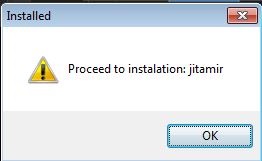
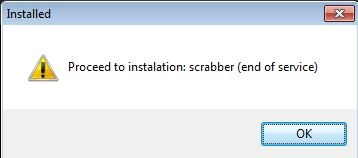
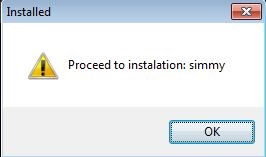
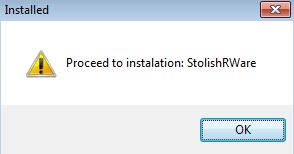
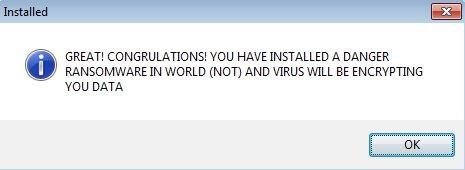

However, as of this writing, the said sites are inaccessible.
It deletes itself after execution.
Ransomware Routine
This Ransomware avoids encrypting files found in the following folders:
- Windows
- Program Files
- Program Files (x86)
It appends the following extension to the file name of the encrypted files:
- .suckmydick
It drops the following file(s) as ransom note:
- {Encrypted Folder}\Hack.html

SOLUTION
9.850
14.638.04
20 Nov 2018
14.639.00
21 Nov 2018
Step 1
Before doing any scans, Windows XP, Windows Vista, and Windows 7 users must disable System Restore to allow full scanning of their computers.
Step 2
Note that not all files, folders, and registry keys and entries are installed on your computer during this malware's/spyware's/grayware's execution. This may be due to incomplete installation or other operating system conditions. If you do not find the same files/folders/registry information, please proceed to the next step.
Step 3
Search and delete these files
- {Encrypted Folder}\Hack.html
- C:\Users\{Username}\Hack.jpg
Step 4
Scan your computer with your Trend Micro product to delete files detected as Ransom.MSIL.ENYBENY.A. If the detected files have already been cleaned, deleted, or quarantined by your Trend Micro product, no further step is required. You may opt to simply delete the quarantined files. Please check the following Trend Micro Support pages for more information:
Step 5
Restore encrypted files from backup.
Step 6
Reset your Desktop properties
Did this description help? Tell us how we did.

